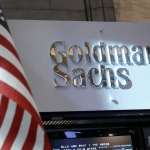In commercial buildings, lighting currently accounts for up to 40% of energy costs,[1] equalling over 50TWh per year of electricity consumption and resulting in over 5 million tonnes of carbon emissions.[2] It is estimated that around 30% to 50% of this could be saved by using more efficient lighting equipment such as LED lamps or appropriate lighting controls.[3] As government initiatives such as The Energy Act 2018 and Enhanced Capital Allowances (ECA) prompt landlords and businesses to improve the energy efficiency of their premises, advanced lighting technology can be an effective and important part of the solution. Lighting suppliers can help their clients reduce energy bills and carbon footprint by offering state-of-the-art technology combined with an appropriate financing solution.
Even though modern lighting systems have the potential to considerably reduce the operating costs of a building, the initial expense required to acquire and install the technology can be a challenge for businesses to bear. This should not, however, be seen as an obstacle to energy efficiency. Financing solutions that link the expected savings in energy costs to the equipment financing payments are available in the market. The Energy Finance (EF) team at Siemens Financial Services Limited (SFS) provides flexible and appropriate asset financing arrangements for investments in increased sustainability such as lighting efficiency upgrades. Based on a reliable assessment of the benefits a new lighting system can bring, SFS can offset the reduction in energy bills against the arrangement’s financing payments. Lighting equipment suppliers working with SFS can make investments more convenient for their clients by integrating the financing offer into their overall sales proposition. The end customer benefits from a financing solution that can make the investment zero net cost and may even be cash positive if the savings are greater than the monthly payments. SFS therefore enables lighting equipment suppliers to sell a sustainability solution that doesn’t compromise their customers’ liquidity.
Advanced commercial lighting technologies can provide energy savings across all sectors. LED luminaires for instance are highly efficient and can last for more than a decade of continuous use. Smart lighting systems employ automated controls that adjust the level of lighting according to demand and environmental conditions.[4] Both can help businesses achieve energy efficiency gains. Suppliers who are able to demonstrate to their clients the expected benefits and return on investment (ROI) from implementing modern lighting technologies possess a strong business case for making the investment. By working with SFS, suppliers can leverage the financier‘s technology know-how and financing expertise to provide their customers with a transparent and compelling financing plan. Additionally, specialist asset finance allows for the arrangement’s contract length and regular payment amount to be adjusted according to the end client‘s specific circumstances thus offering some flexibility.
Financing solutions like these are a welcome and needed funding resource as legislation continues to emphasise the importance of sustainability. For example, the Energy Act 2018 is designed to prompt landlords of private and commercial buildings to ensure their properties are energy efficient. The legislation requires that from the 1st April 2018 let properties have a minimum Energy Performance Certificate (EPC) rating of E.[5] Landlords of properties with a lower rating therefore have to improve the energy efficiency of these buildings, or risk being penalised.[6] Energy efficient lighting solutions can make an important contribution to a higher EPC rating as it helps reduce energy use per square metre of floor area and the environmental impact based on carbon dioxide (CO2) emissions. Additionally, environmental taxes, reliefs and payment schemes encourage businesses to operate in a more sustainable way.[7] The CRC Energy Efficiency Scheme, for instance, requires registered organisations to report energy usage and purchase allowances equal to the CO2 emissions generated.[8] In return, Enhanced Capital Allowances (ECAs) let businesses that invest in energy-saving equipment, such as efficient lighting technologies, write off the total cost of the equipment against their taxable profit as a 100% first-year capital allowance.[9] Equipment suppliers can factor in any ECA benefit into their cost/savings calculations, which can significantly reduce the payback period for the client, provided the client is able to claim ECAs. With financing arrangements to suit individual circumstances and time periods, suppliers are better able to provide their customers with a clear understanding of the Total Cost of Ownership (TCO) of the lighting equipment.
As the importance of sustainable operations continues to rise on the agenda of businesses, landlords and government, advanced lighting technologies and systems can provide an easy win for energy efficiency gains. Suppliers can help their customers make the upgrade to modern lighting technology by working with trusted financing providers to eliminate the challenge of upfront capital investment for their customers. As a consequence, green investments like these not only have a positive impact on customers’ budgets, but also on the reduction of the carbon footprints.
[1] Electric Wholesaler, 2015, ¢The lighting Industry: Then and Now¢, http://www.ewnews.co.uk/index.php/the-lighting-industry-then-and-now/
[2] Carbon Trust, ¢Lighting¢, 2014
[3] Ibid
[4] Parliamentary Office of Science and Technology, ‘Lighting Technology’, 2010, http://www.parliament.uk/documents/post/postpn351.pdf
[5] Residential Landlords Association (RLA), ‘Minimum energy efficiency standards’, http://www.rla.org.uk/landlord/guides/minimum-energy-efficiency-standards.shtml
[6] Ibid
[7] Gov.uk, ‘Environmental taxes, reliefs and schemes for businesses’, https://www.gov.uk/green-taxes-and-reliefs/overview
[8] Ibid
[9] Ibid












